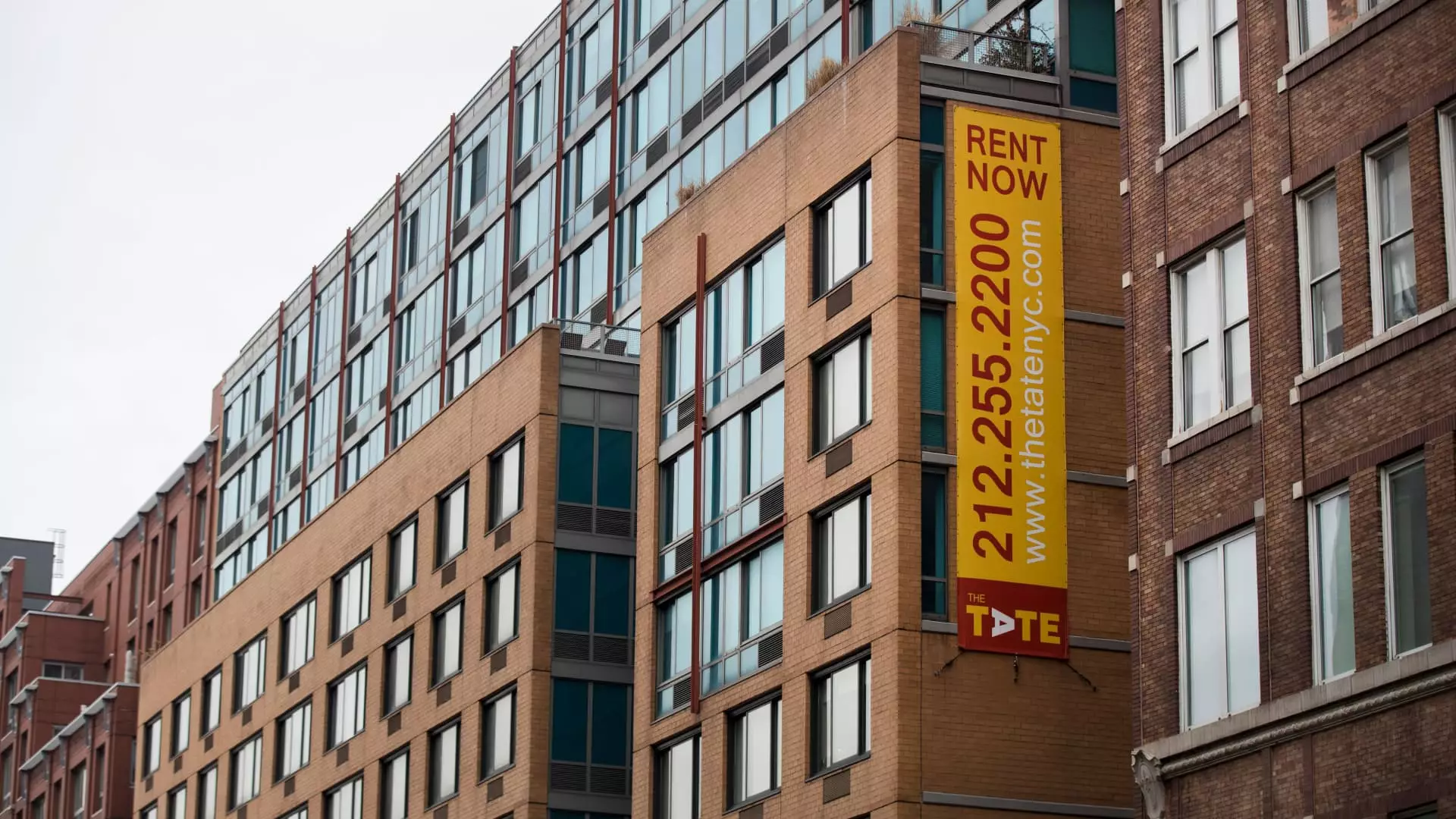In a world where economic uncertainties loom large, the trend of stagnation in rental turnover rates has prompted a reevaluation of what renting can offer. While previously, the freedom of renting attracted many to city life—where close proximity to amenities is often paired with transient lifestyles—the current reality stands in stark contrast. Real estate analyst Alex Goldfarb’s observations capture this paradigm shift, highlighting that rental turnover is plummeting to a mere 30%, far below the standard 50%. What’s driving this trend? A combination of a prohibitive housing market, scarce rental supply, and increasing trepidation regarding economic prospects. Coincidentally, the stability that renting offers in tumultuous times may be more appealing than ever.
The Tug of War Between Demand and Supply
What’s particularly revealing is the response of landlords to this stagnant turnover. As tenants choose to remain in their residences, landlords are experiencing fewer vacancies and are able to renew leases at better prices. This is a rare win-win for both parties—landlords secure upscale rental pricing while renters enjoy the security of remaining in their homes. The dichotomy of this situation raises an important inquiry: Are we witnessing the birth of a renting renaissance? With ongoing supply shortages on the coasts, it seems that the market is slowly adjusting to accommodate a populace less inclined to uproot their lives.
Emerging Trends: The Suburban Shift
Another noteworthy trend is the shift toward suburban rentals. People are prioritizing living spaces that offer more room and comfort, as evidenced by a noticeable migration to the suburbs. This is not merely a quest for larger apartments but a deeper yearning for stability and practicality. The pandemic pushed remote work into the mainstream, suggesting that many prioritize living arrangements that allow for comfortable at-home work environments. This suburban shift indicates that a significant number of renters may stop viewing their leases as transient but rather as a cornerstone in their lives.
Economic Nuances and Future Projections
However, caution is warranted. The overwhelming dependency on expanding tech hubs like San Francisco and Seattle raises questions about sustainability. The tech industry’s return-to-office mandates enhance real estate demand but can be volatile with economic fluctuations. Furthermore, as Goldfarb mentioned, regions like the Sunbelt may face vulnerabilities if external economic pressures generate broader job losses. In focusing on the multifamily market, we find that a post-pandemic recovery is underway, with rents rising by 0.9% year-over-year due to a surge in net absorption. Still, this recovery feels precariously balanced on the brink of impending economic disruptors.
Looking Ahead: A Fork in the Road
As the dust settles on the immediate impacts of returning to a more stable rental market, one cannot ignore the potential long-term consequences of these trends. The multifamily vacancy rate has dipped to 4.8%, signaling something significant is underway. However, it’s vital to remember that this moment in time could quickly pivot in response to broader market shifts. As we assess whether this rush toward renting could redefine our notions of home, only time will tell if the benefits of renting in such a volatile world will ultimately outweigh its drawbacks. Thus, what proudly stands as a secure rental market today could very well be the foundation for our future housing landscape—a time where owning a home comes with new challenges and choices.

